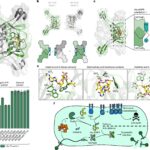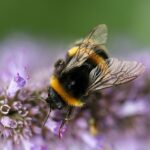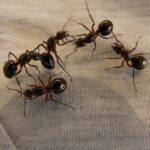Cutaneous larva migrans (CLM) is a parasitic skin infection occured from the contamination of animal helminths.1 The hookworm larvae penetrate the skin causing intensified itching and characteristic lesions. CLM is usually diagnosed on the basis of clinical presentation.2
Zanzibar, an island in the Indian Ocean which politically belongs to the Republic of Tanzania, is one of favourite destinations for European travellers. Even the COVID-19 pandemic and travel-related restrictions have not dramatically reduced the number of international tourist arrivals (the testing requirement in Tanzania was not introduced until 4 May 2021).
Polish tourists make up a large percentage of visitors to Zanzibar. Hundreds of Poles arrive there on direct charter flights; one of the top tourist locations is the Jambiani beach which stretches along the southeast coast of the island. In February and March 2021, several Polish travellers who had recently returned from Zanzibar (2–4 weeks before) were admitted to the University Centre of Maritime and Tropical Medicine (UCMTM) in Gdynia, Poland for the diagnosis and treatment of characteristic skin lesions localized on the feet (Figure 1). Four patients, aged 9–40 years old, of both sexes, had all been staying in different beach hostels in the vicinity of the Jambiani village. Each of the hostels consisted of between several and a dozen bungalows and offered accommodation for a maximum of several dozen guests coming from various European countries, mainly from Russia and Poland. The hostels were located directly on the beach, and therefore, some tourists were often walking barefoot when staying around their bungalows. Some hostels accepted guests with their pets at no extra charge, and for this reason, the presence of dogs on the beach did not come as a surprise either to the staff or to the vacationing tourists. Consequently, it was impossible to ensure that stray dogs do not enter the Jambiani beach.
Physical examination of the patients admitted to the UCMTM revealed erythematous, serpiginous or linear, pruritic lesions localized on the dorsal surface or soles of the feet. Each of the examined patients was diagnosed with hookworm-related CLM (hrCLM) and was prescribed oral albendazole 400 mg once daily for 3 days and additionally referred for liquid nitrogen cryotherapy applied once daily for 30–40 s near the head of the track (freezing of the larva; cryotherapy is discouraged as a treatment option for hrCLM by some experts who consider this method obsolete/the tissue damage can be worse than the effect on the larvae if applied for an effective time). Pruritus resolved within 2–3 days after initiation of treatment, while the skin lesions disappeared after 1–2 weeks of treatment.
Skin exposure to soil or sand contaminated with faeces of stray dogs or cats (while walking barefoot on the beach) was the potential source of infection. In the same period, multiple hrCLM cases were reported among 70 Danish students who had recently returned home after completing a 4-month internship at a school in Zanzibar that was located very near the beach with stray dogs.3
The larvae of hookworms which are present in the faeces of infected animals (mainly Ancylostoma spp.) can actively penetrate the human skin, but because humans are incidental hosts, the penetration is only limited to the skin and the parasites are unable to complete their full life cycle.1 The diagnosis of hrCLM is based on the presence of characteristic skin lesions localized on the feet and manifesting with pruritus as well as a medical interview and travel history with direct exposure of the skin to beach sand.
Typical skin lesions of CLM. Source: University Centre of Maritime and Tropical Medicine, Gdynia, Poland.
Although the illness is self-limited, pharmacotherapy in the form of a single dose of ivermectin (200 μg/kg orally) or albendazole (400–800 mg/d orally for 3 days) aimed to kill the larvae migrating under the skin, helps to alleviate pruritus and heal skin lesions within 1–2 weeks of treatment initiation (the mean incubation period for hrCLM is generally 5–15 days).1
There are, however, cases with long incubation period lasting up to 5 months.4 In such cases, pruritic lesions appear many weeks after a person had returned from a journey and are not necessarily associated with exposure to CLM.5 This is why a medical interview and a travel history are so important to establish an accurate diagnosis and prescribe the right treatment.
To date, the best way to prevent hrCLM is to avoid direct skin exposure to contaminated soil and sand; for this reason, travellers to destinations where hrCLM is endemic are strongly recommended to wear soft protective footwear so as not to come into direct contact with the dog or cat faeces which are considered to be the primary source of infection with CLM in humans.6
Taking care of the environment along the south-east coast of Zanzibar and ensuring that stray animals, whose excrement contaminate the soil, do not enter the beaches frequented by tourists are the recommended preventive measures against hrCLM transmission. Regrettably, they seem to be neglected by both local sanitary authorities and hotel staff.
articolo redatto da:
Krzysztof Korzeniewski, MD Journal of Travel Medicine, Volume 29, Issue 1, January 2022, taab136,











